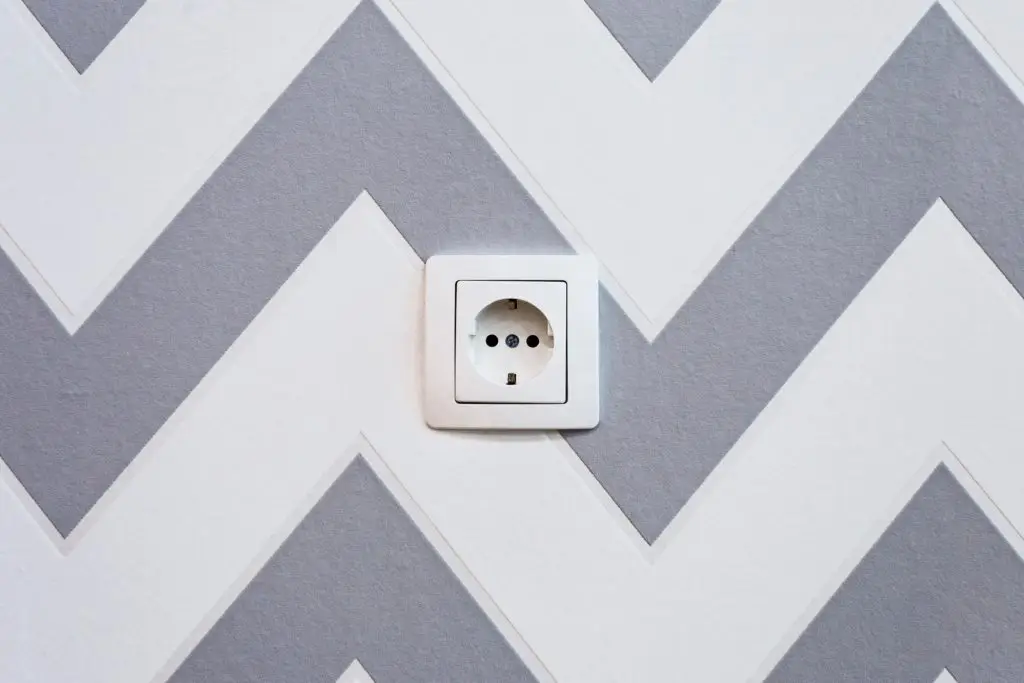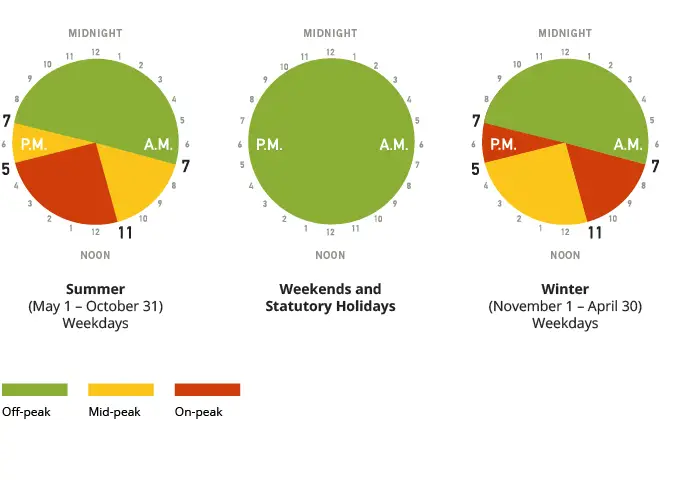-

Peak hours vs. off-peak hours in Ontario: The cheapest times to use electricity (Photo: Neven Krcmarek on Unsplash)
Time-of-Use Pricing (TOU) in Ontario
In Ontario, the big question still remains: Is there a cheapest time to use electricity? The answer is yes, there is. To understand everything about it and save money on your hydro bill, however, you need to learn about peak hours, time-of-use pricing (TOU) and how the Ontario hydro rates work.
Being aware of the Ontario time-of-use rates gives you the opportunity to avoid peak hours and reduce your monthly utilities. In Canada, hydro rates are not necessarily fixed; in some Canadian provinces, hydro prices change according to the demand and tend to be higher during the day. Read on to learn more about the energy costs related to mid-peak, off-peak and on-peak rates.
Time-of-use rates in Ontario
Whether in Toronto, Mississauga or Ottawa, you can find out when electricity is cheapest to use with the help of the Ontario Energy Board (OEB), which is an independent energy regulator. Every time there are new time-of-use rates for electricity in the province, the OEB updates its website. Usually, prices, including peak energy hours, are separated between summer and winter rate periods.
Rates in Ontario vary according to the demand, so morning and afternoons offer higher prices, since companies, stores, industries and all types of businesses tend to be open during that time.
During the night and over the weekend, the demand is considerably lower, so there is no reason for energy providers to charge customers the same hydro rates they do during the daytime and weekdays.
So, is electricity cheaper at night time? In most cases, yes, including weekends. The price difference is so significant that it can get more than two times higher from off-peak hours to peak hours.
From Toronto Hydro to Hydro One, all regulated retailers in Ontario follow the rules set by the OEB, including the peak hours for electricity.
According to Toronto Hydro, hydro rates for summer 2025 (from May 1, 2025, to October 31, 2025), present an enormous difference between electricity prices in a single day. On weekdays, between 7 p.m. and 7 a.m., which is considered off-peak hours, hydro rates are 7.6 cents per kilowatt-hour (kWh), whereas at mid-peak hours, usually on weekday mornings and late afternoons (from 7 a.m. to 11 a.m.; and from 5 p.m. to 7 p.m.), rates are much higher (12.2 cents/kWh).
However, during peak hours (from 11 a.m. to 5 p.m.), rates in Ontario are 15.8 cents per kWh.
Such rates indicate that you will generally spend twice as much money if you use your appliances during peak hours. Furthermore, if you use highly energy-consuming devices such as clothes washers and air-conditioners during that period, you could spend even more money on energy costs.
Peak hours vs. off-peak hours
We’ve been talking about peak hours for some time now, but what exactly does it mean? The Ontario Energy Board categorizes hydro rates into three groups: On-peak, mid-peak and off-peak.
As their names suggest, they account for each hydro pricing period of the day, which helps us understand the Ontario time-of-use chart.
The demand for electricity in Ontario helps the OEB to define what are peak and off-peak hours. Such criteria, however, may vary considerably from summer to winter.
TOU price periods in Ontario are usually different in the winter (November 1 to April 30) than in the summer (May 1 to October 31), as people change their habits depending on the season. This seasonal switch directly affects electricity demand and Ontario electricity rates.
Below, you can check examples of rates for summer 2025, according to the Ontario Energy Board.
Summer (2025) — May 1, 2025, to October 31, 2025
- Off-peak hours: From 7 p.m. to 7 a.m.
- Mid-peak hours: From 7 a.m. to 11 a.m. and 5 p.m. to 7 p.m.
- On-peak hours: From 11 a.m. to 5 p.m.
- Weekend and holidays: Always off-peak
As an illustration, if a person is looking to save money on their hydro bill in Ontario this summer or winter, they should do their most electricity-consuming tasks during off-peak hours.
-
Hydro rates: Check the best times to use energy in Ontario (Chart: Ontario Energy Board)
Is there a best time to do laundry? Off-peak hours for laundry
One of the biggest concerns online regarding electricity is if there is the cheapest time to use a washing machine. Basically, the best time to use your clothes washer is the same period considered the best to use electricity and save money: Off-peak hours.
You can experiment to turn on your laundry machine only at these periods for a month and see if it can lower your energy bills. For most people in Canada, the best time to do it is between 7 p.m. and 7 a.m.
Still, if you don’t save as much as you were expecting, there are some things you can do to save energy while using your clothes washer. Below, you can find some simple yet effective tips to improve your laundry machine’s performance.
- Wash clothes over the weekend or during off-peak hours.
- Use cold water whenever you can. If you don’t have severe stains or dirt on your clothes, cold water will do the work. There are specific detergents for this washing method, and the results are pretty similar to what hot water can do.
- Select an energy-efficient dryer, or consider air-drying your clothes, in case you have enough space in your home
Peak times across Canada
The whole peak rate system is not the same in all Canadian provinces. While Ontario hydro bills are undoubtedly impacted by different periods, British Columbia is planning time-of-use guidelines, so there can also be a cheapest time of the day to use electricity.
According to BC Hydro, the province’s leading electricity provider, customers could soon choose to be charged under a time-of-use mechanism. The main charging system in BC is the Residential Conservation Rate. To encourage energy conservation, the prices go up according to your use of electricity. Customers are charged one rate up to a certain point, and higher rates for the electricity use beyond that point. In other words, the more you use, the more you pay.
In Alberta, there is a demand system, which makes rates go higher in the winter and summer between 5 a.m. and 7 p.m. According to Enmax, Albertans tend to use more energy between 4 p.m. and 8 p.m., which increases electricity prices in the late afternoon and makes it cheaper in the early morning.
Even in Ontario, there are other regulated rate electricity bill options, including the Tiered price plan and the Ultra-Low Overnight (ULO) plan, which work differently from the TOU electricity option. If you’re not sure which plan could work best for you, check our guide here.
Compare electricity and natural gas rates in Ontario
Energy consumers in Ontario, whether households, businesses or industrial hydro and natural gas consumers, are free to choose their energy providers. In other words, you don’t need to sign up with the default regulated provider. There is a wide range of competitive retailers in the province, and each one of them may offer specific plans and rates. It can get quite hard to compare all of them one by one, so EnergyRates.ca makes it easy for you and lists all the major available competitive electricity and natural gas suppliers in Ontario according to your location.
The website is a free and unbiased energy rate comparison tool, and enables you to find the best available energy plans in your area. For large energy consumers, it’s even possible to get a custom energy quote based on your energy consumption. EnergyRates.ca will compare and present you with pricing options from a range of providers in your area.












